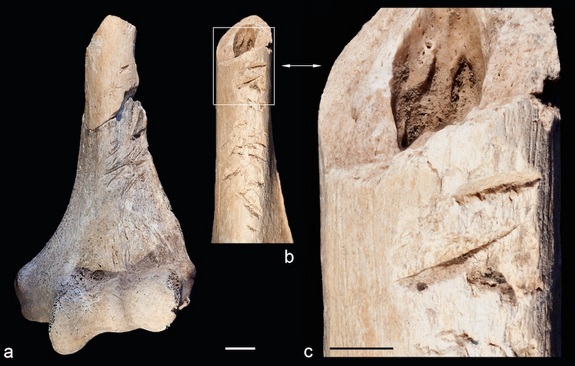In Achenheim, east France, a circular pit containing the skeletons of ten people, who were carefully placed on a bed of severed arms, was discovered. Experts say it is shedding new light on the violent conflicts that occurred thousands of years ago.
The site is located just outside of Strasbourg, and the corpses were found in one of the 300 ancient “silos” that were once used to store grain and other foodstuffs. The silos were stored within a defense wall that pointed towards “a troubled time, a period of insecurity”, explained experts.
The gruesome discovery tells the tale of a devastating massacre that was likely carried out by “furious ritualized warriors,” according to Philippe Lefranc, a specialist on the period for Inrap. It was a team from France’s National Institute for Preventive Archaeological Research (Inrap) that discovered the remains of the massacre, dated to 6,000 years ago.
Thousands of years ago, it was customary among farming communities across Central and Western Europe for bodies to be buried in these circular pits. The discovery at the pit, called Pit 124, however, suggests that people butchered in raids were buried in the same way.
These were not peaceful burials in Pit 124. Evidence suggests that the victims were executed together, likely by a stone axe, and then dumped in the silo, explained Dr. Fanny Chenal, an archaeologist from Inrap working on the discovery. The group all exhibited multiple injuries to their legs, hands, ribs, pelvis, and skulls.
In total, there were remains of ten individuals: five adult skeletons and one adolescent skeleton and four arms from unrelated individuals. Carbon dating showed the bones are between 5,500 and 6,000 years old. The arms that the bodies were placed on were hacked off as “war trophies.” One of the arms belonged to a young teen, aged 12-16 years old. Dr. Chenal believes that the individuals belonged to the same social group.
This phenomenon of taking arms as war trophies is seen not only in Pit 124, but also in a nearby pit, called Pit 157, that was found in Bergheim in 2012, said Lefranc. “A lot of things are similar [between the two pits].” said Dr. Chenal. Pit 157 is about 6.5 foot (two meter) deep circular pit and was found by archaeologists from Antea Archéologie in Habsheim and the universities of Strasbourg and Bordeaux.
In a paper published last year about the Bergheim burial, experts claimed the gruesome discovery tells the tale of a devastating raid on a settlement in eastern France that may have wiped out an entire family. “This amazing discovery confirms the hypothesis of war trophies proposed for Bergheim and sign very violent acts, probably in relation durring Neolithic wars.” Dr. Chenal said.
The discovery has major implications for researchers, as Dr. Chenal explained to Gizmodo, “For a long time, Neolithic societies were considered relatively egalitarian and peaceful.” She said, “But since several years a lot of research has shown that it was not the case.”
Supported by new evidence, Dr. Chenal believes that war was actually common in Neolithic times and, while there is no clear evidence of this in France, there is evidence in Germany from the same time period.
At the same time, there is already debate about whether the circular pits, the silos, were remnants of storage pits and repurposed for people not deemed worthy of a grander burial, or were used for high-ranking people. The pits that contain more than one individual and were clearly not an execution burial, for example, suggest that the person buried was of a higher social status — they would have been buried with slaves or relatives who were killed in order to be buried with the important person. Another theory suggests that the pits were used for human sacrifices.
Image source
